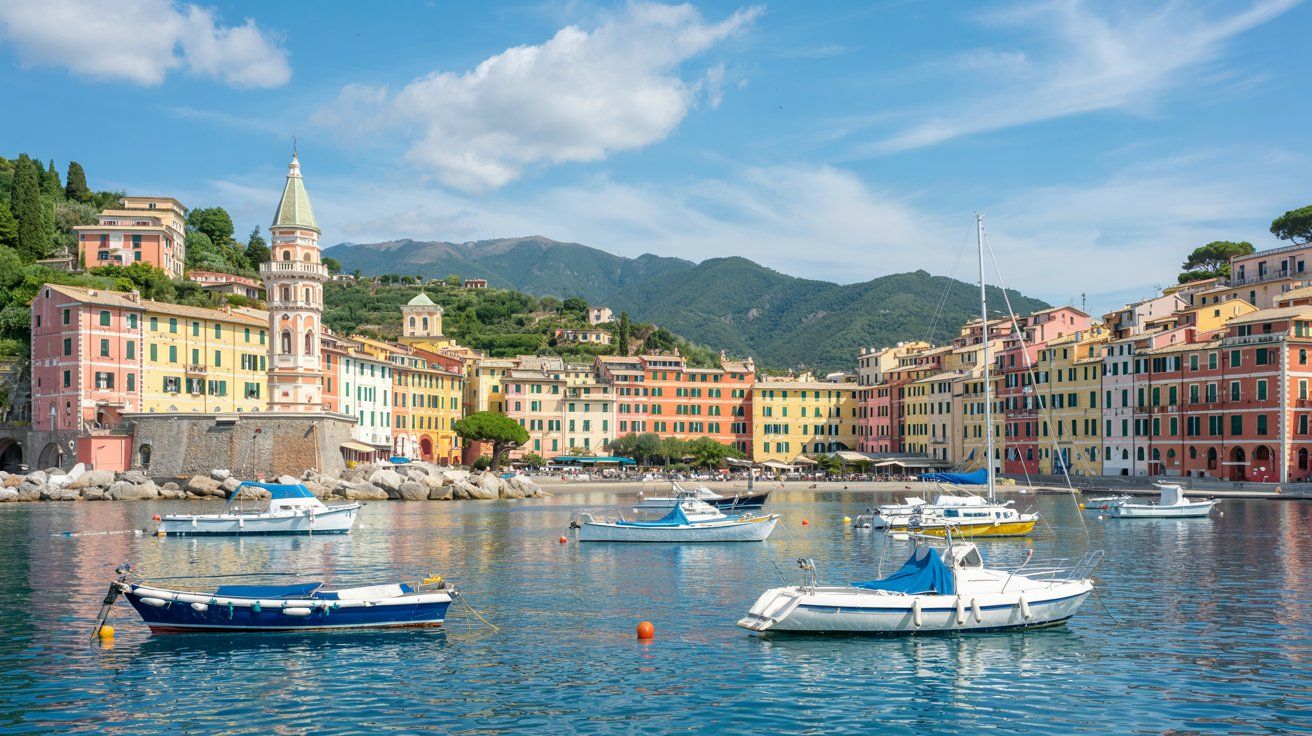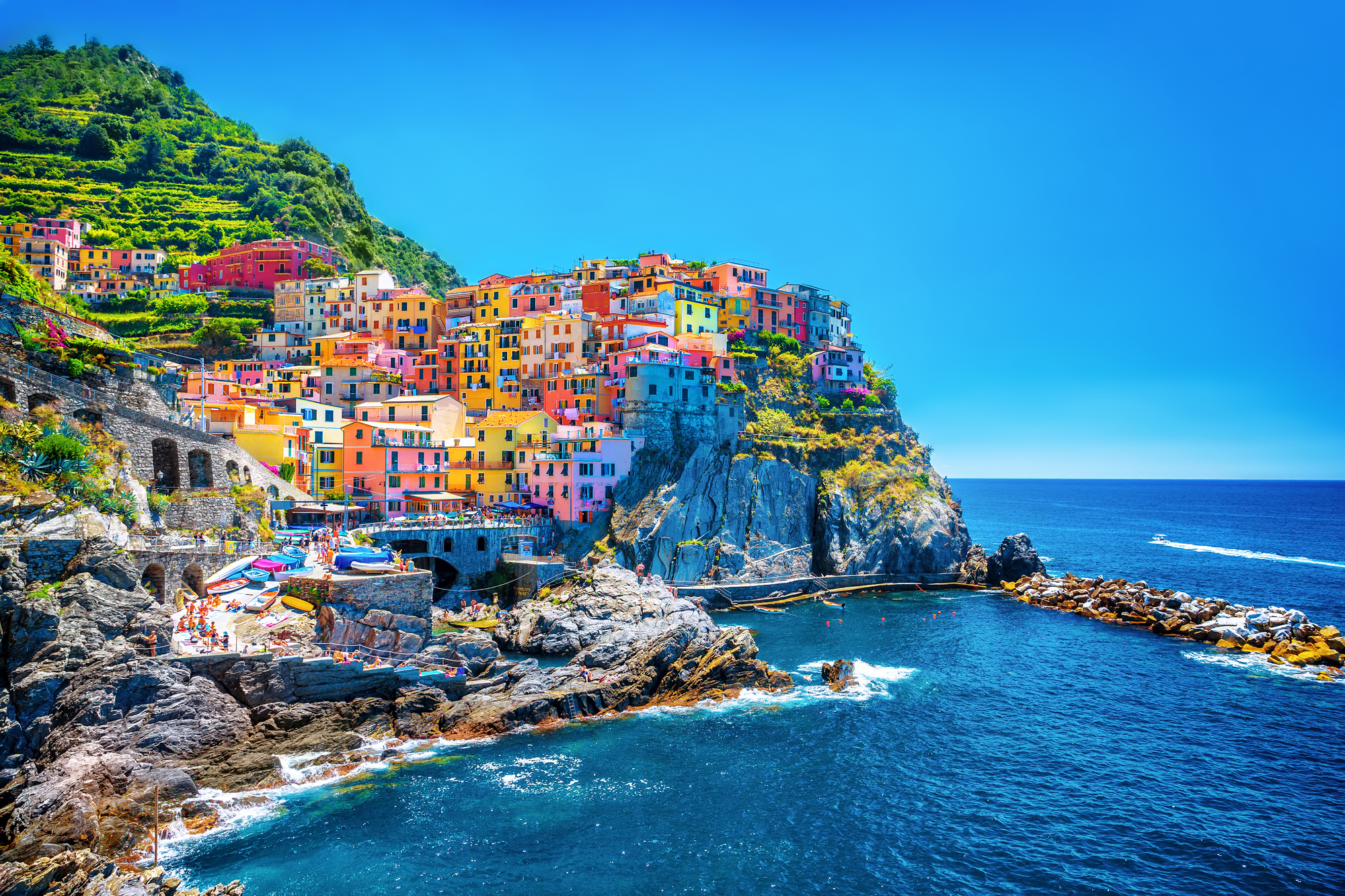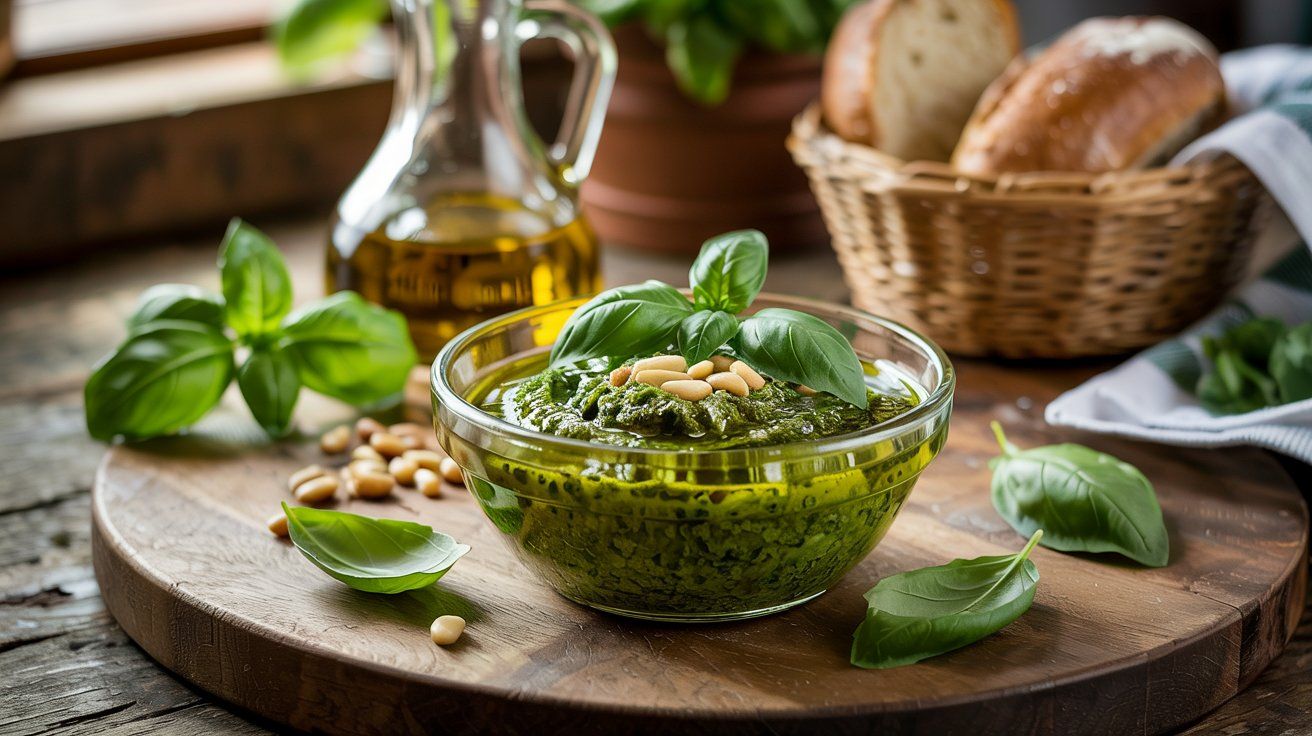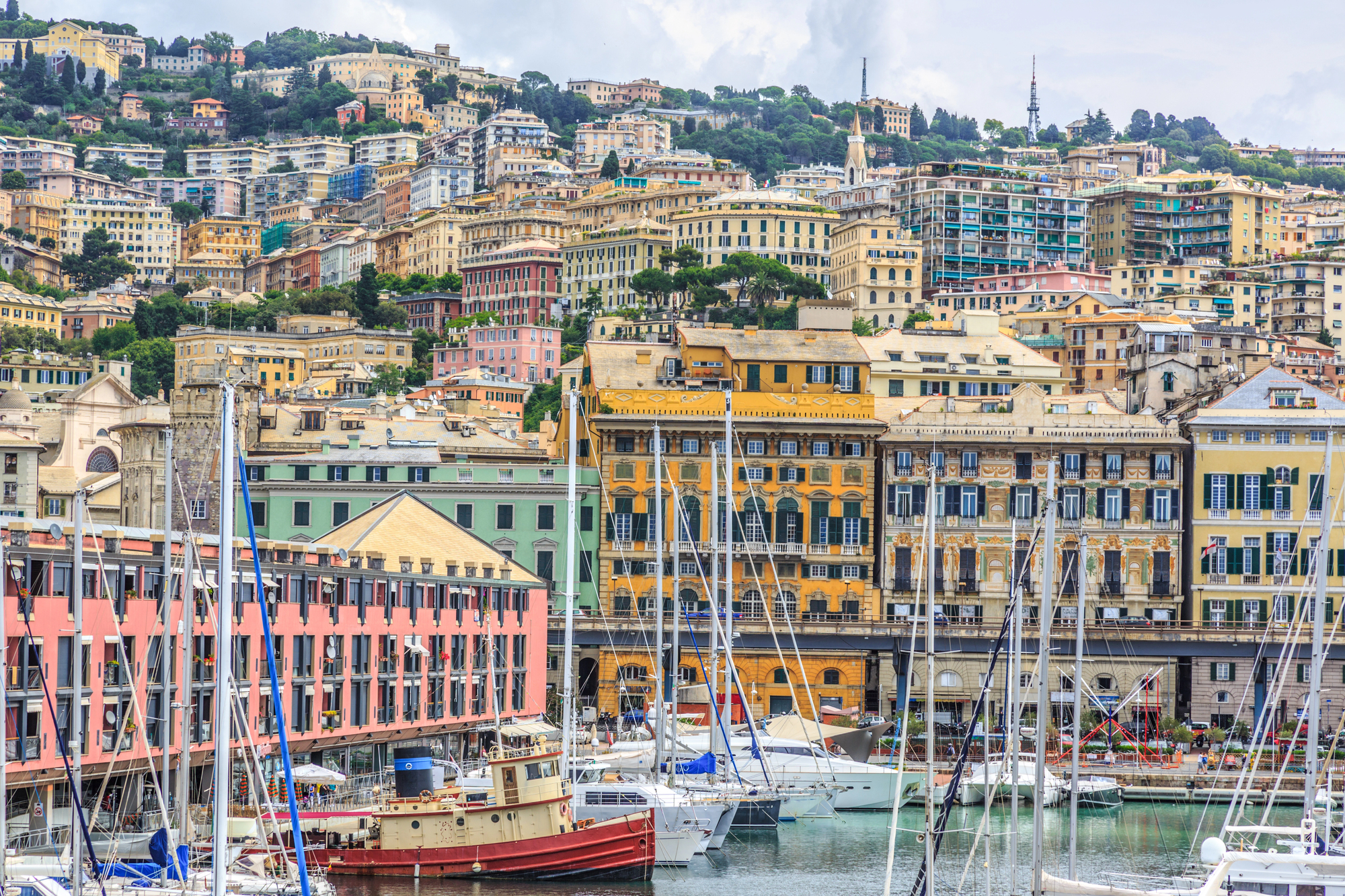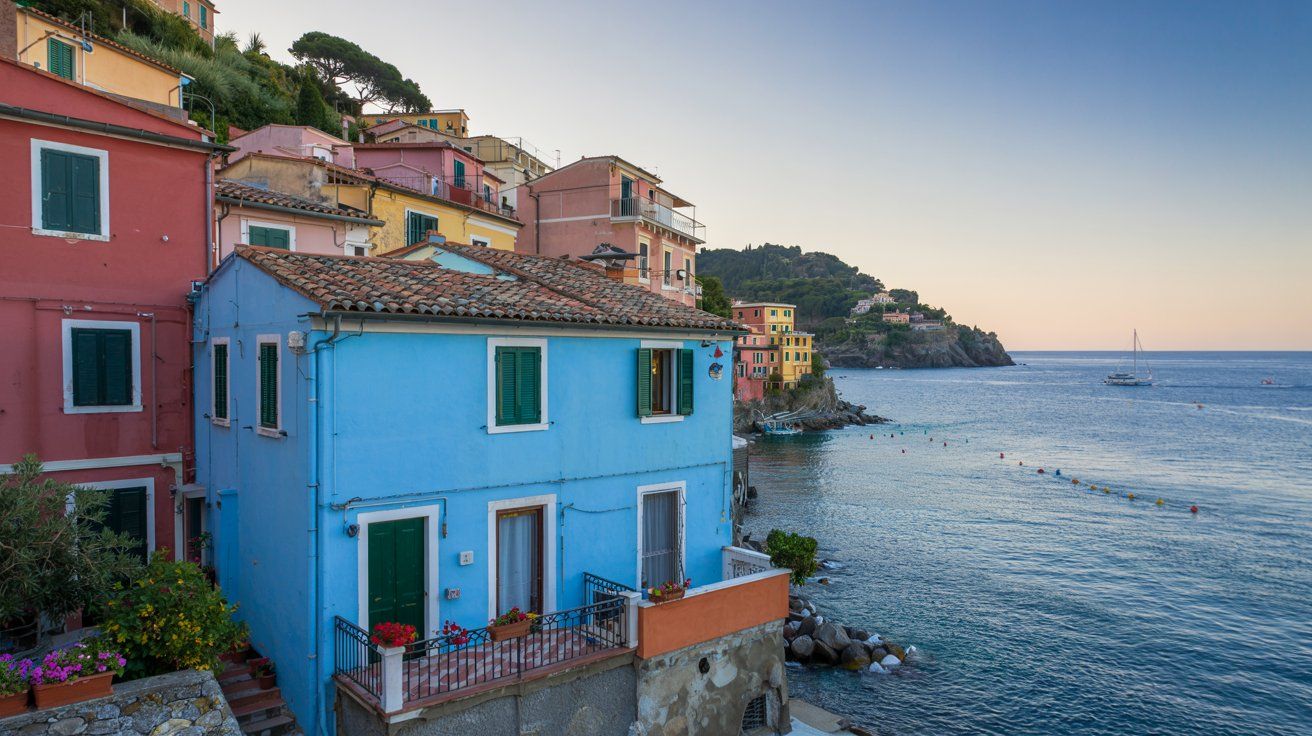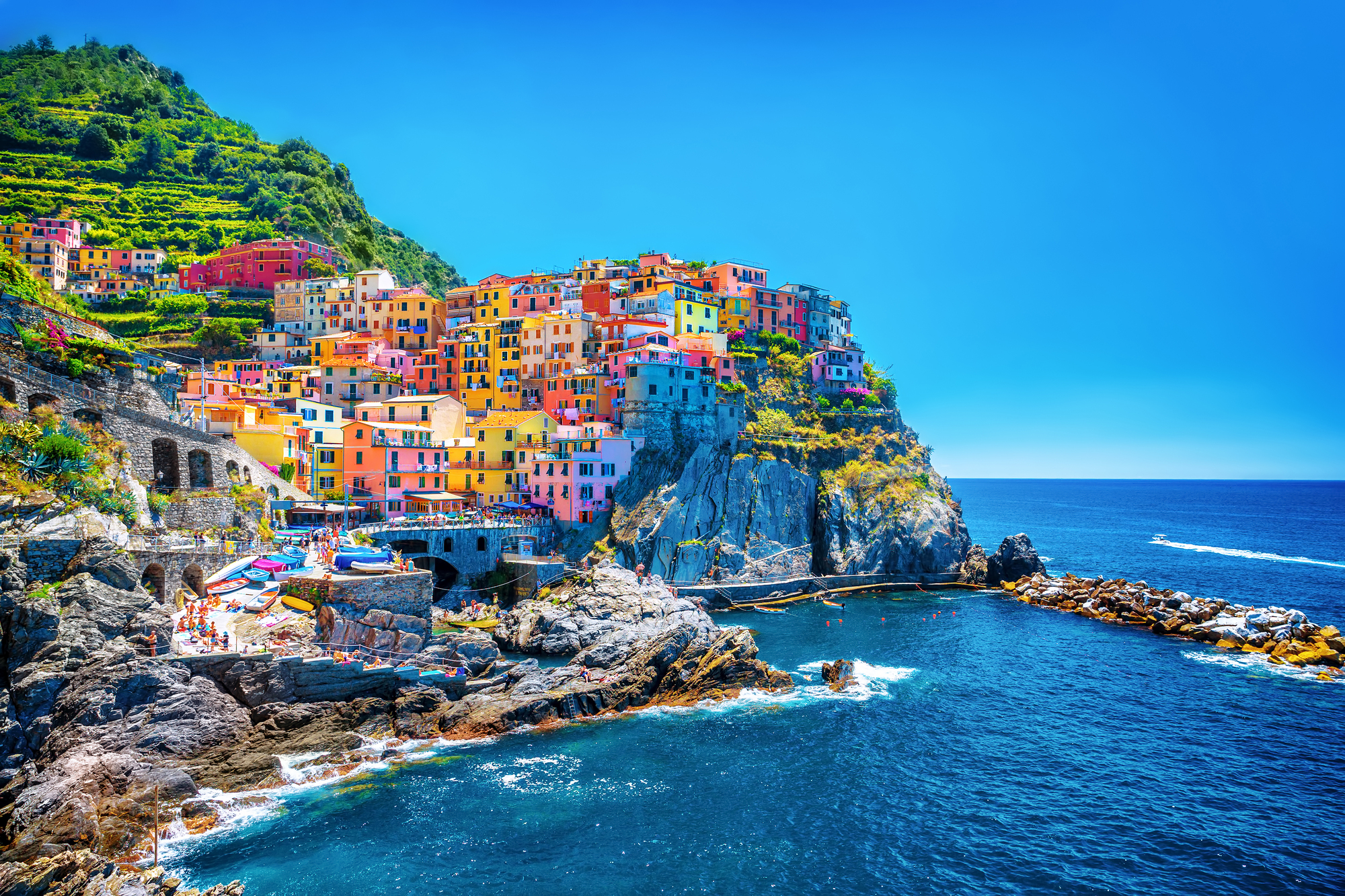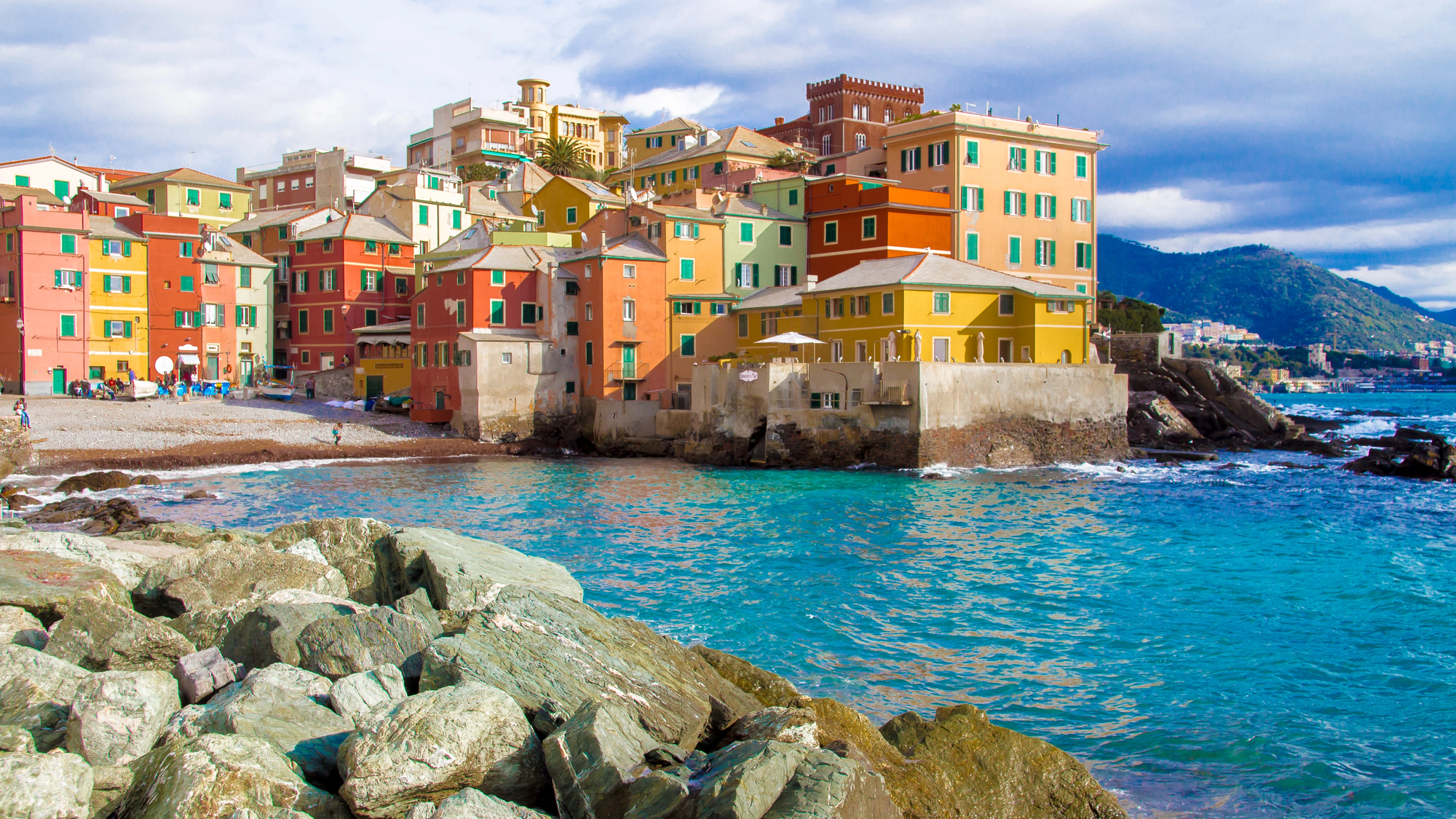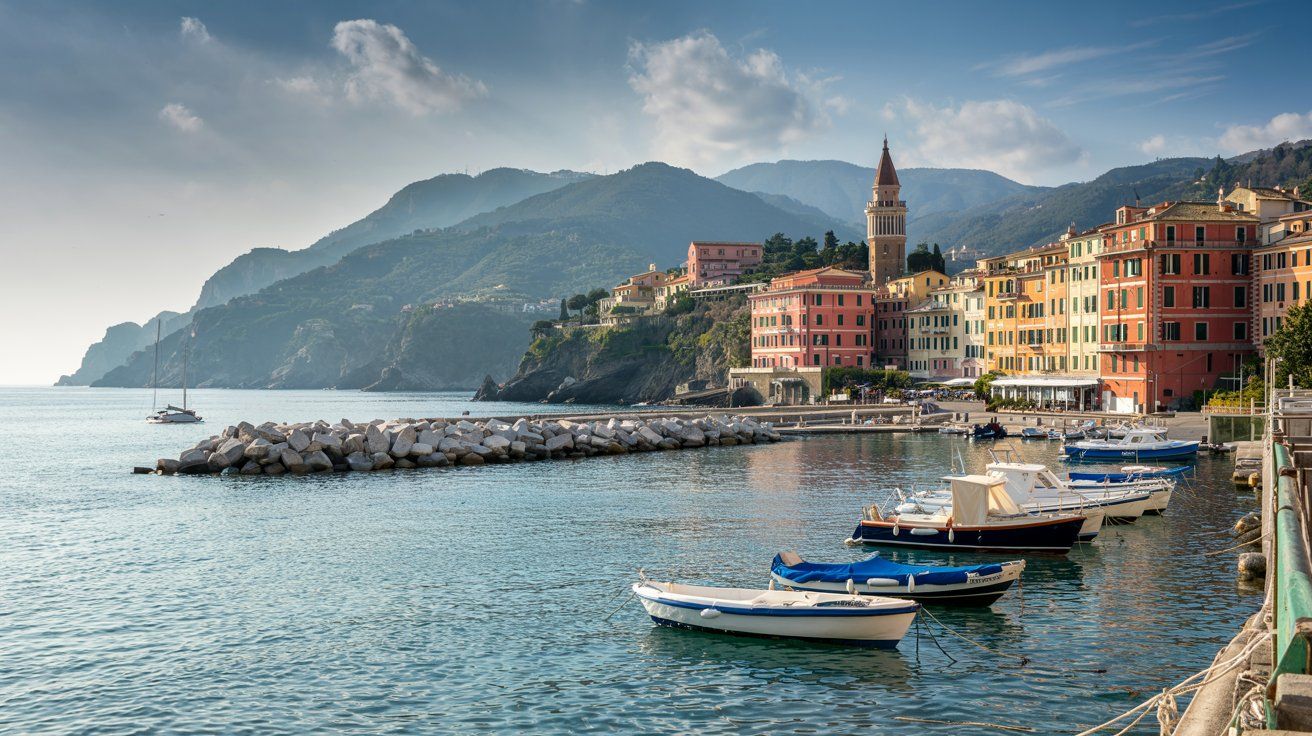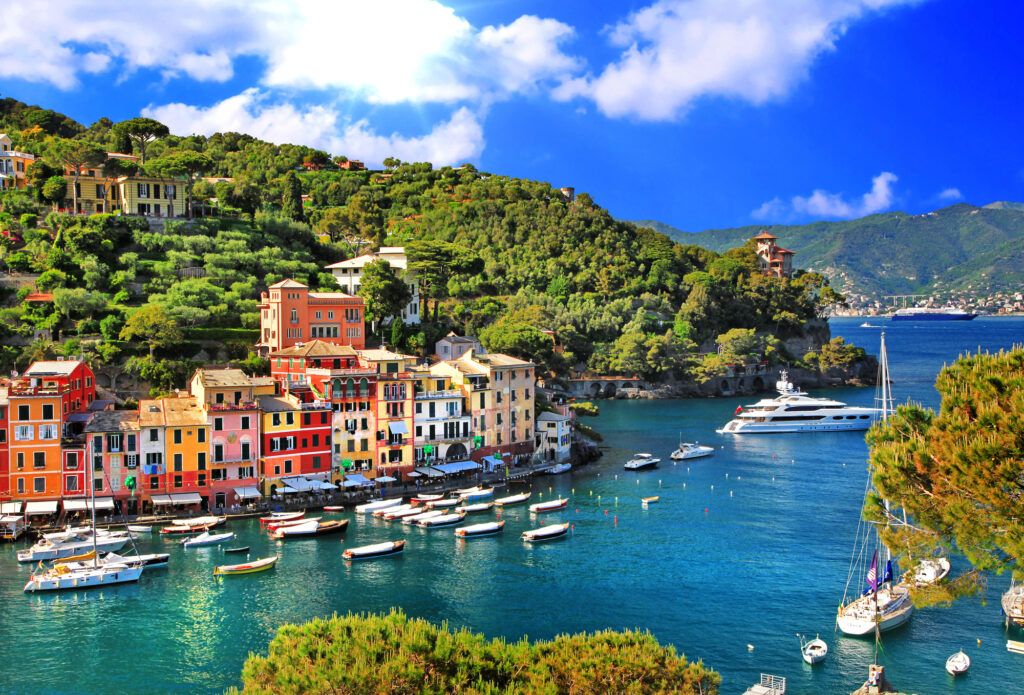Planning a week in the Italian Riviera gives you the chance to balance coastal walks, cultural discoveries, and authentic food experiences. Focus on activities that highlight both the natural landscapes and the everyday life of Liguria. That way, you’ll see more than just the postcard views and start to get a sense of how the region actually ticks.
In late September, the pace eases up as summer crowds thin, but the weather still feels just right for being outside. You’ll have plenty of chances to hike, try local food, and wander historic towns without the peak-season chaos. Here’s a mix of outdoor adventures, cultural stops, and local traditions to keep your week interesting.
Find available hotels and vacation homes instantly. No fees, best rates guaranteed!
Check Availability Now
1) Hike the Cinque Terre coastal trails
Walk between the five villages—Monterosso, Vernazza, Corniglia, Manarola, and Riomaggiore—using cliffside paths. The Blue Trail (Sentiero Azzurro) is the most famous, linking the towns with those classic sea views. You’ll need a Cinque Terre Card for some trail sections.
Parts of the trail are steep and a bit rough, with uneven stone steps and the occasional cluster of hikers. Monterosso to Vernazza is especially pretty, but it’s also a workout. If you want something gentler, try shorter routes around Manarola or Corniglia.
There’s over 120 km of trails, so pick based on your mood and energy. Trails open and close depending on weather and repairs, so always check updates before you go.
Trains connect the villages, making it easy to hike one section and ride back. This saves your legs and keeps things flexible. Bring water, sturdy shoes, and leave plenty of time if you want to do a full stretch.
2) Explore Portofino’s scenic natural park
Start right from Portofino village and follow marked trails that wind up into the hills. The paths are in good shape, but some climbs get your heart going, so decent shoes are a must.
The park links Portofino with towns like Camogli and Santa Margherita Ligure. For a quick walk, stick to loops that circle back to the harbor.
You’ll pass olive trees, holm oaks, and pines. On clear days, the views of the Ligurian Sea and hidden coves are pretty stunning.
It’s quieter up here than down on the busy waterfront. Benches and small chapels along the way give you a sense of local history.
Want more ideas? Check out guides with Portofino Regional Natural Park trails to find something that fits your pace.
3) Visit the Aquarium of Genoa
The Aquarium of Genoa sits in the Old Port, just a stroll from the historic center. It’s Italy’s biggest aquarium and one of Europe’s largest, with over 70 tanks spread across 27,000 square meters.
Inside, you’ll see dolphins, sharks, penguins, and manatees in thoughtfully designed spaces. There are thousands of fish and invertebrates, so you get a real sense of marine life here. More info and the layout are on the Aquarium of Genoa official website.
Most people spend two to three hours, though families sometimes linger longer. Weekdays tend to be less crowded.
The aquarium was built for the 1992 Expo and now draws visitors from all over. Afterward, you can wander the Porto Antico area, with its cafes and harbor views.
Ticket prices vary, and there are discounts for groups and kids. Check the Aquarium of Genoa calendar for current hours and ticket info.
4) Discover Trompe-L’oeil art in Santa Margherita Ligure
As you wander Santa Margherita Ligure, look up—you’ll spot building facades painted with detailed illusions. This trompe-l’oeil style tricks the eye with fake windows, columns, and balconies. It’s a quirky tradition that’s all over Liguria.
Check out the residential homes, hotels, and public buildings. Painted arches, balustrades, and stone blocks give flat walls a more ornate look, jazzing up the streets without expensive construction.
No tickets or tours needed here—just walk and take it all in. It becomes a sort of scavenger hunt as you move through town.
If you’re curious, compare Santa Margherita’s painted facades to those in other Riviera towns. Some say the trompe-l’oeil in Santa Margherita Ligure is among the best, so it’s worth a look if you’re into local art and architecture.
5) Walk the waterfront of La Spezia Cruise Terminal
Step out of the cruise terminal and you’ll hit the waterfront in minutes. The flat path makes it easy, even if you’re short on time before your next excursion. Palm trees line the promenade, offering some shade as you stroll.
Watch ferries heading for Cinque Terre or Portovenere. The dock sits close to the terminal, so you can see the bustle of comings and goings without actually boarding. The Gulf of La Spezia stretches out in front of you.
Keep going and you’ll reach parks where locals hang out. Benches face the water—a nice spot to pause. You’ll also find cafés and kiosks for a quick snack or coffee.
The area gets busy when ships are docked, but it’s much calmer in the evening. Unlike bigger Italian ports, La Spezia’s waterfront is compact and easy to see on foot. For a quick intro to the city, the walk from the La Spezia Cruise Port is both scenic and straightforward.
6) Tour medieval castles along the Riviera
Several medieval castles dot the Italian Riviera, each with its own story. These old fortresses once guarded coastal towns and now offer peaceful views over the sea.
Gradara Castle stands out for its well-preserved walls and towers. You can book entry through Gradara Castle tours and wander its courtyards and halls. It’s not huge, so you can cover it in a couple of hours.
Smaller castles and ruins appear in villages like Sainte-Agnès, where you’ll find remnants of a fortress, a 19th‑century chapel, and a local museum. You’ll see these stops in itineraries like the 9‑day Riviera route. Don’t expect full visitor facilities—these places are simple.
Elegant resorts, charming apartments, and vacation rentals with immediate confirmation. From Portofino to Cinque Terre, discover the most beautiful coastal towns of Liguria!
See Available Properties
You’ll likely deal with uneven paths, sparse signage, and few modern comforts. The upside? It’s quiet, and you can wander ancient walls without the crowds.
7) Taste Ligurian cuisine specialties
Ligurian food is all about what’s fresh—seafood, seasonal veggies, and straightforward prep. Dishes here lean toward balance, not heavy sauces.
Try pesto Genovese, the region’s claim to fame, made with basil from Genoa’s hills. You can even join a pesto and pasta workshop in Genoa and make it yourself. Doing it by hand gives you a sense of how locals treat their ingredients.
Farinata, a thin chickpea pancake, shows up in bakeries and little eateries. It’s cheap, filling, and best eaten hot. Focaccia is everywhere—sometimes plain, sometimes stuffed with cheese.
Seafood is center stage, especially anchovies from Monterosso. Locals marinate, fry, or bake them with herbs. Meat is less common, but you’ll see rabbit stews and hearty vegetable soups inland.
If you want a crash course, try a guided food tour like the Taste of the Italian Riviera. You’ll sample a bunch of dishes in one go—handy if you’re short on time.
8) Relax on the beaches near Boccadasse
Boccadasse sits on Genoa’s eastern edge, where narrow alleys spill onto a tiny pebble beach. It can get packed on weekends, but it’s a mellow spot for a swim.
Colorful houses face the water, creating a postcard backdrop. Sit on the stones, watch locals chat, and enjoy the slower pace compared to the city. Evenings are especially nice as the sun drops behind Genoa.
If you want more space, walk along Corso Italia to larger beaches. The promenade links Boccadasse with other seaside spots, so you can mix swimming and strolling.
Keep your expectations simple—there aren’t many facilities. Bring water and anything you need for comfort. Small cafés nearby serve coffee or gelato after your swim.
For more about the area, see this Boccadasse travel guide or check things to do near Boccadasse if you want to tack on a few sights.
9) Sail along the Italian Riviera coastline
Seeing the Riviera from the water is a whole different experience. From a boat, the pastel villages of Cinque Terre really pop, and the cliffs seem even more dramatic. A short ride from Monterosso gives you this view in just a few hours (Tripadvisor).
Late spring through early autumn is best for sailing. In September, the sea is usually calm, and daytime temps hover around 25–30°C—pretty ideal (Boattheglobe).
Choose from private charters, small group tours, or regular ferries. Private boats give you more freedom but cost more and need advance booking. Group tours are cheaper and often include stops for swimming, though you’ll follow a set route.
Facilities on small boats are basic—restrooms and shade might be limited. Pack water, sunscreen, and a hat. If you want more comfort, bigger cruise-style boats run from La Spezia and Genoa, with more space and amenities.
Sailing connects coastal towns without the hassle of crowded trains, and you’ll get access to hidden coves you just can’t reach on foot.
10) Attend a wine tasting in local vineyards
The hills above Cinque Terre are dotted with terraced vineyards, their rows sloping right down toward the sea. Small producers often welcome visitors for tastings, showing off local grapes like Vermentino and Sciacchetrà. The terrain’s steep, so you’ll need to be ready for a bit of a climb or a stroll up winding paths—nothing too wild, but it’s not a flat stroll, either.
In Vernazza, some tours mix a light hike with a guided tasting, so you get the views and a bit of wine wisdom. Things like the pesto class and wine tasting in Vernazza let you pair classic Ligurian food with local wine, usually in a cozy setting. These gatherings are small and don’t drag on for hours, which is honestly kind of perfect.
Manarola’s vineyard tours are especially nice at sunset. You sip wine while looking out over the village—hard to beat that. A vineyard tour and tasting in Manarola usually feels quieter than what you’ll find in the busier towns. It’s smart to book ahead, especially in late September when the grape harvest brings more folks to the area.
Easy booking across stunning accommodations from historic hotels to modern retreats. Pastel-colored buildings and crystal waters create the perfect Mediterranean escape!
Secure Your Italian Getaway
Not up for much walking? No problem. The villages have wine bars and cooperatives where you can try flights of regional wines without leaving town. Local enotecas make it easy to compare styles at your own pace. This route’s great if you want flexibility or you’re short on time.
Understanding the Culture of the Italian Riviera
You really get the Italian Riviera when you look past the beaches. The culture’s woven into the way people cook, celebrate, and keep old traditions alive—sometimes in big ways, sometimes in the tiniest routines.
Local Traditions and Customs
In Liguria, food, family, and community are at the heart of daily life. You’ll notice it in how locals cook—lots of olive oil, fresh basil, and seafood caught just hours before dinner. Pesto’s everywhere, but here, it’s a ritual. Many folks still make it with a mortar and pestle, not a blender, which says a lot about the patience and pride in their food.
People gather in ways that feel both casual and meaningful. In fishing villages like Boccadasse, families stroll the promenade after dinner, just chatting and watching the sunset. This passeggiata is less about exercise and more about unwinding and connecting.
Religious traditions run deep. Towns celebrate their patron saints with processions, music, and fireworks. These are spiritual, sure, but they’re also a chance for everyone to get together—locals and visitors alike.
Even in busier places like Genoa, you’ll see a tug-of-war between modern work and old habits. Shops close for long lunch breaks, which might surprise you if you expect 24/7 convenience. But honestly, it highlights how much people value downtime and family.
Seasonal Festivals in September
September’s a lively month here, with harvest and sea festivals popping up all over. Coastal towns throw events for the sea—boat parades, blessings for the fishing boats, and plenty of seafood to try. You can tell the Mediterranean means everything to this region.
The grape harvest kicks off, too. Inland villages put on grape festivals where you can watch people press grapes, try different wines, and maybe share a meal right in the village square. It’s a way to keep these farming traditions in the spotlight, even as tourism grows.
In Genoa, food fairs celebrate things like focaccia and farinata. You’ll find stalls selling different takes on these classics, often paired with local wines. The vibe’s lively but rooted in community, not just a big show for tourists.
September means fewer crowds than peak summer. You get easier access to events and a more genuine look at local life. Some things might only happen on weekends, though, so you’ll want to check schedules.
Practical Travel Tips for September Visits
Late September’s mild and less crowded, but you’ll want to plan a bit. Packing light is smart, but bring layers, and figure out how to hop between towns without wasting time.
Weather and What to Pack
Daytime temperatures in late September hover around 20–25°C (68–77°F). Evenings cool off—think 15°C (59°F), especially near the coast. Rain showers happen, but they’re usually brief.
Pack light layers: cotton shirts, a sweater, and a waterproof jacket. A small umbrella won’t go amiss for those quick showers. Comfortable walking shoes are a must for cobblestones and trails in Cinque Terre.
If you’re thinking about a dip, bring swimwear. The sea’s still warm enough. Sandals or water shoes help on rocky beaches.
For dining out, folks here dress neatly, even when it’s casual. A collared shirt or a simple dress will help you blend in. Try not to overpack—laundromats and hotel laundry services are easy to find.
Transportation and Getting Around
Trains are hands-down the easiest way to hop between Riviera towns. Regional lines link up Genoa, La Spezia, and those tiny coastal villages. Tickets don’t cost much, but don’t forget to stamp them before you get on—otherwise, you might get fined. Trains come often, though if it’s late in the evening, you might wait a bit longer.
Driving gives you freedom, sure, but parking’s a headache and the streets can get ridiculously tight. If you do rent a car, brace yourself for steep parking fees along the coast. Honestly, most folks stick with trains to dodge the hassle.
Local buses can help with short trips, especially if you’re aiming for a hilltop village. Just watch out—on Sundays, the schedule thins out, so double-check before you go. Ferries? They’re a lovely way to see the coastline, and you’ll get some killer views, but the service tapers off by late September.
Honestly, walking’s where it’s at for exploring the town centers. Everything’s close, and you’ll catch so many details on foot that you’d miss from a car or bus.
From seaside palazzos to hillside villas, find your perfect stay along this stunning stretch of Mediterranean coastline. Instant booking with best price guarantee!
Browse Accommodations Now

